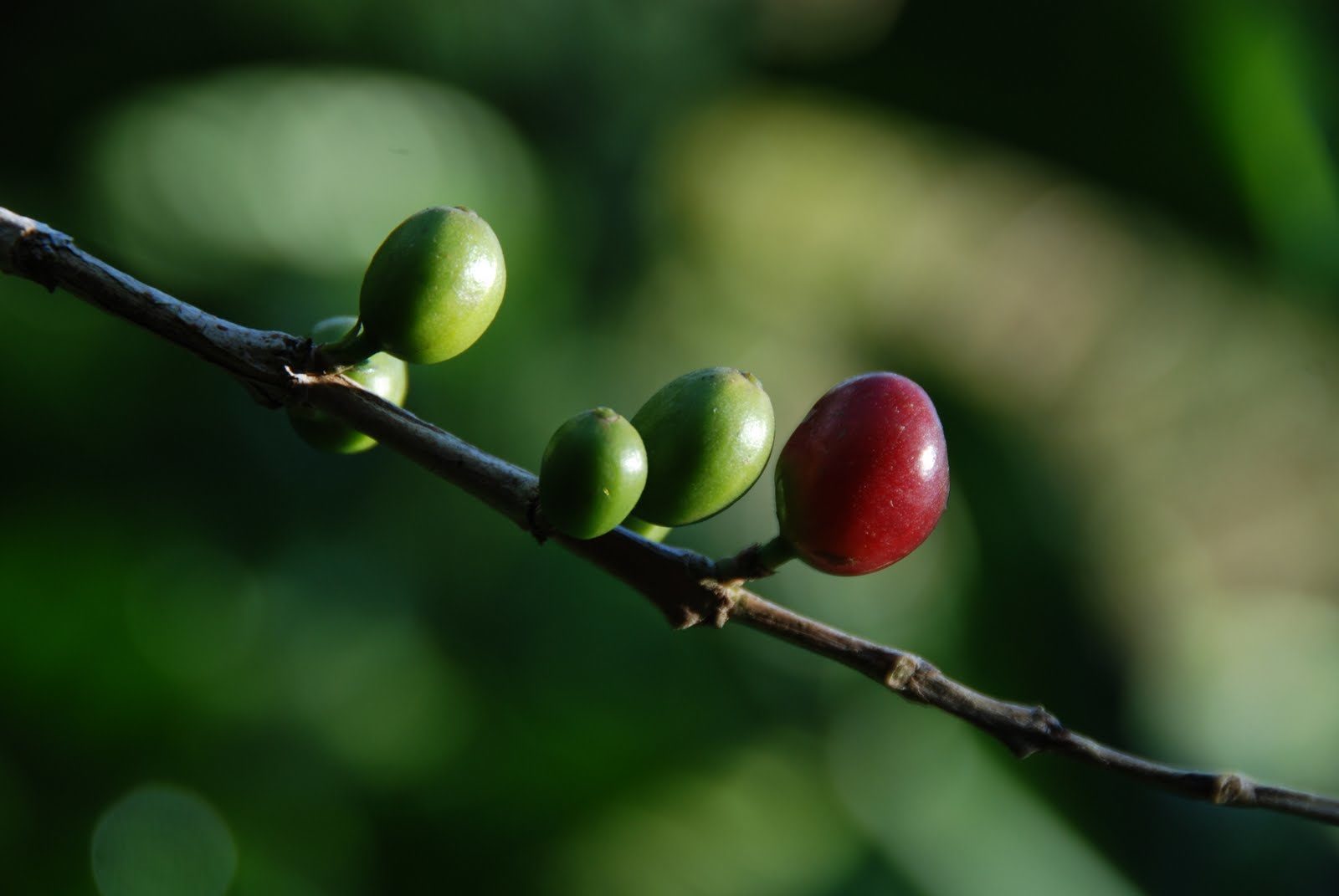Why Buy From Us?
Magic Beans!
Let us talk about the coffee bean!
(Portions of this post were taken from an article by Ernesto Illy which appeared in the Scientific American in 2002.)
For sheer sensory enjoyment, few everyday experiences can compete with a good cup of coffee. The alluring aroma of steaming hot coffee just brewed from freshly roasted beans can drag sleepers from bed and pedestrians into cafés. But underlying this seemingly commonplace beverage is a profound chemical complexity. Without a deep understanding of how the vagaries of bean production, roasting and preparation minutely affect the hundreds of compounds that define coffee’s flavor, aroma and body, a quality cup would be an infrequent and random occurrence.
Green coffee beans are the seeds of plants belonging to the Rubiaceae family, which comprises at least 66 species of the genusCoffea . The two species that are commercially exploited are Coffea arabica, which accounts for two thirds of world production, and C. canephora, often called robusta coffee, with one third of global output. Robusta coffee plants and all wild coffee species have 22 chromosomes, whereas arabica has 44. Therefore, arabica and other coffee species cannot be crossed to produce a hybrid plant.
Robusta is a high-yielding and disease-resistant tree standing up to 12 meters tall that grows best in warm, humid climes. It produces a cup featuring substantial body, a relatively harsh, earthy aroma, and an elevated caffeine content that ranges from 2.4 to 2.8 percent by weight. Although robusta is sold by many purveyors, it does not give rise to the highest-quality coffee. Arabica, which originated in the Ethiopian highlands, is a medium- to low-yielding, rather delicate tree from five to six meters tall that requires a temperate climate and considerable growing care. Commercially grown coffee bushes are pruned to a height of 1.5 to 2.0 meters. Coffee made from arabica beans has an intense, intricate aroma that can be reminiscent of flowers, fruit, honey, chocolate, caramel or toasted bread. Its caffeine content never exceeds 1.5 percent by weight. Because of its superior quality and taste, arabica sells for a higher price than its hardy, rougher cousin.
Roasting is a pyrolytic (heat-driven) process that greatly increases the chemical complexity of coffee. The aroma of green coffee contains some 250 different volatile molecular species, whereas roasted coffee gives rise to more than 800.
When subjected to the staged heating of a roasting machine, residual water inside each cell is converted to steam, which promotes diverse, complicated chemical reactions among the cornucopia of sugars, proteins, lipids and minerals within. At high heat, from 185 to 240 degrees Celsius, sugars combine with amino acids, peptides and proteins according to a well-known caramelization process called Maillard’s reaction.
The end products are brownish, bittersweet glycosylamine and melanoidins — which give rise to coffee’s dominant taste — along with carbon dioxide (up to 12 liters per kilogram of roasted coffee).
Simultaneously, a wide variety of lower-mass aromatic molecules emerge; these volatile compounds give coffee its familiar fragrance. Pressure inside each cell increases to as much as 20 to 25 atmospheres as the steam and carbon dioxide try to escape but are sealed in by the thick, low-porosity cell walls and a coating of oil. Some cells eventually burst, creating the characteristic popping sound of roasting coffee. During roasting, coffee bean volume increases by half or more; bean mass decreases by a fifth.There are typically two seeds per coffee berry packed with the flat end facing each other, but that is not always the case. A special case which is common is called peaberry which is a single seed. But, there can be more than two in a coffee berry also.
The outer skin of the coffee berry is generally tough and can withstand handling. The inner pulp of the coffee berry is generally mushy. In a few types of coffee plants, the pulp is more valuable than the bean itself. This is because the coffee berry pulp has a high sugar content and can be fermented making a coffee liquor or a tea made from the pulp. The coffee berry parchment shell is fairly tough. This is taken off in the last coffee bean processing stage. However, the coffee silverskin is so thin and attached so well it tends to stay with the coffee bean right up to roasting.
When roasted, the silverskin can, and usually does, crack off the coffee bean. The silverskin cracks off because it does not expand like the inner coffee bean does when roasted. This posses a problem in two ways. First it is a thin messy chaff which is undesirable and must be removed from the batch of roasted coffee beans for cosmetic reasons. Second, it can easily catch fire. Our roasting machine is fitted with twin high efficiency, cyclone type collectors, which remove this chaff from the hot gasses being discharged.
We roast for shipments every morning between 9am and about noon. You are welcome to stop in at our shop, any time after noon to place an order and watch while we roast it. You’ll enjoy watching the tiny green beans swell to twice their original size; take in the rich aroma of the smoking beans floating on a fluid bed of hot air; and listen for the critical 1st and or 2nd cracks, signaling the roast’s development just before dropping the perfect coffee into the high speed cooling tray. There are many unique benefits in choosing Scott Brothers Coffee, intimacy with the roast process might be one which appeals to you.
Whether you order online, phone in an order for pickup at the store, or watch while we roast your order; you may be sure; you are getting the best and freshest arabica coffee beans available anywhere.

